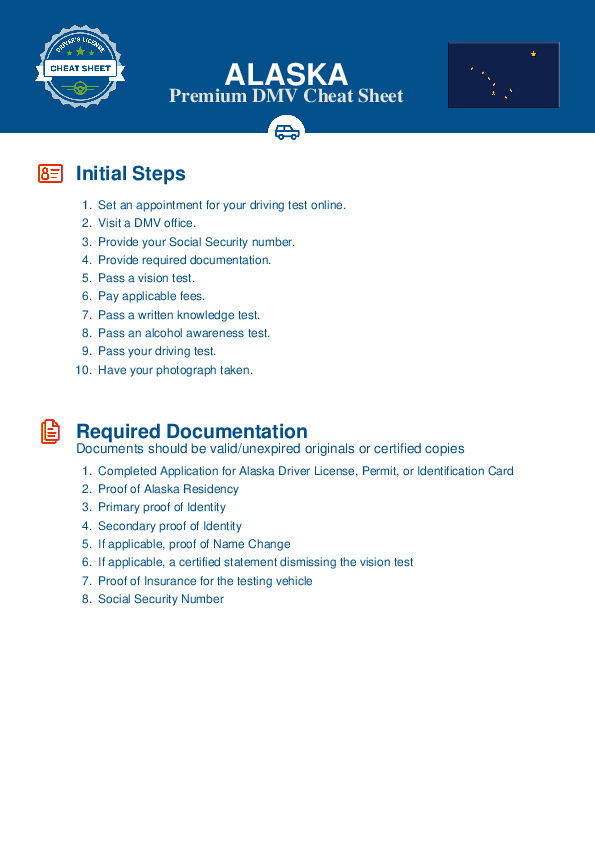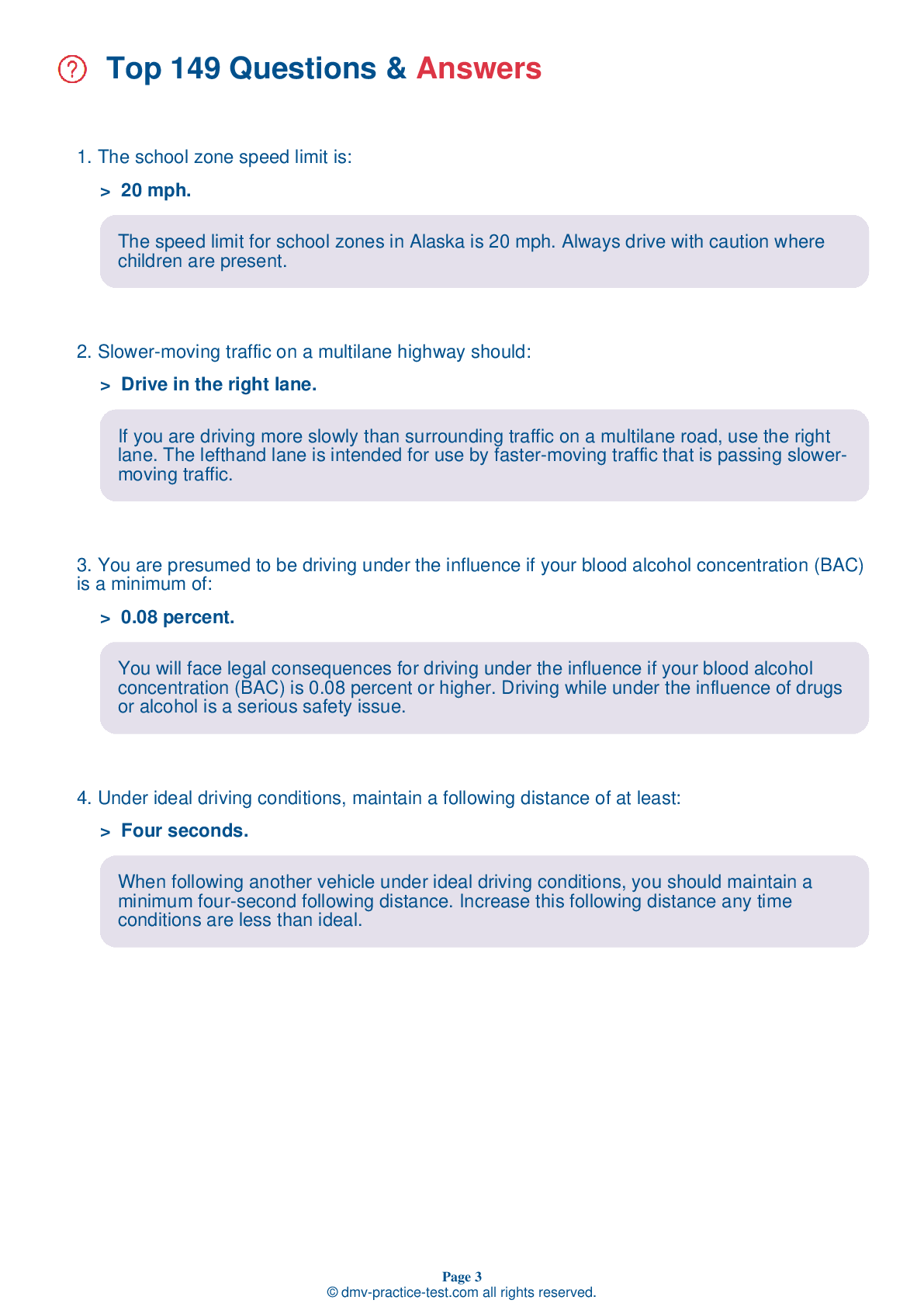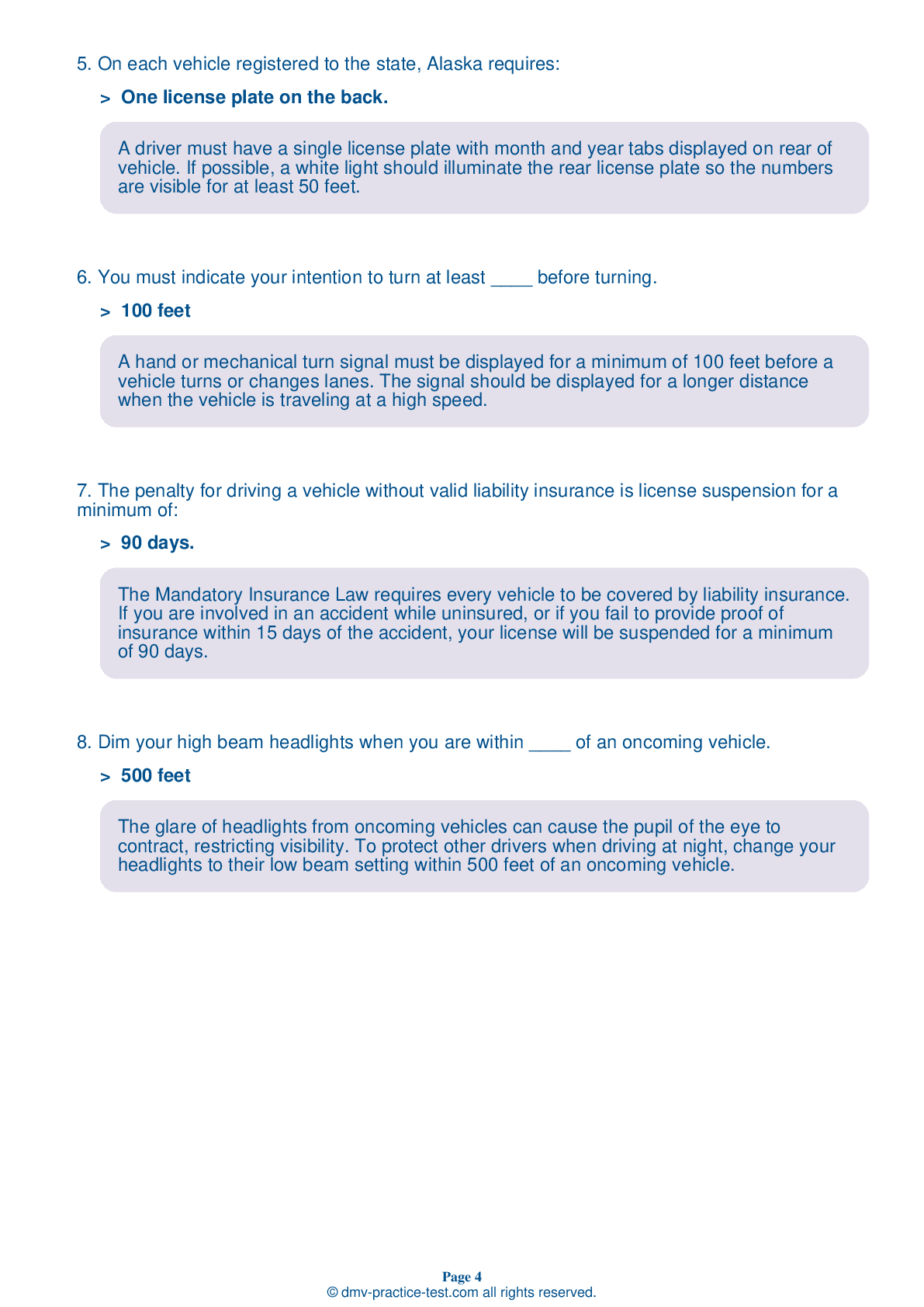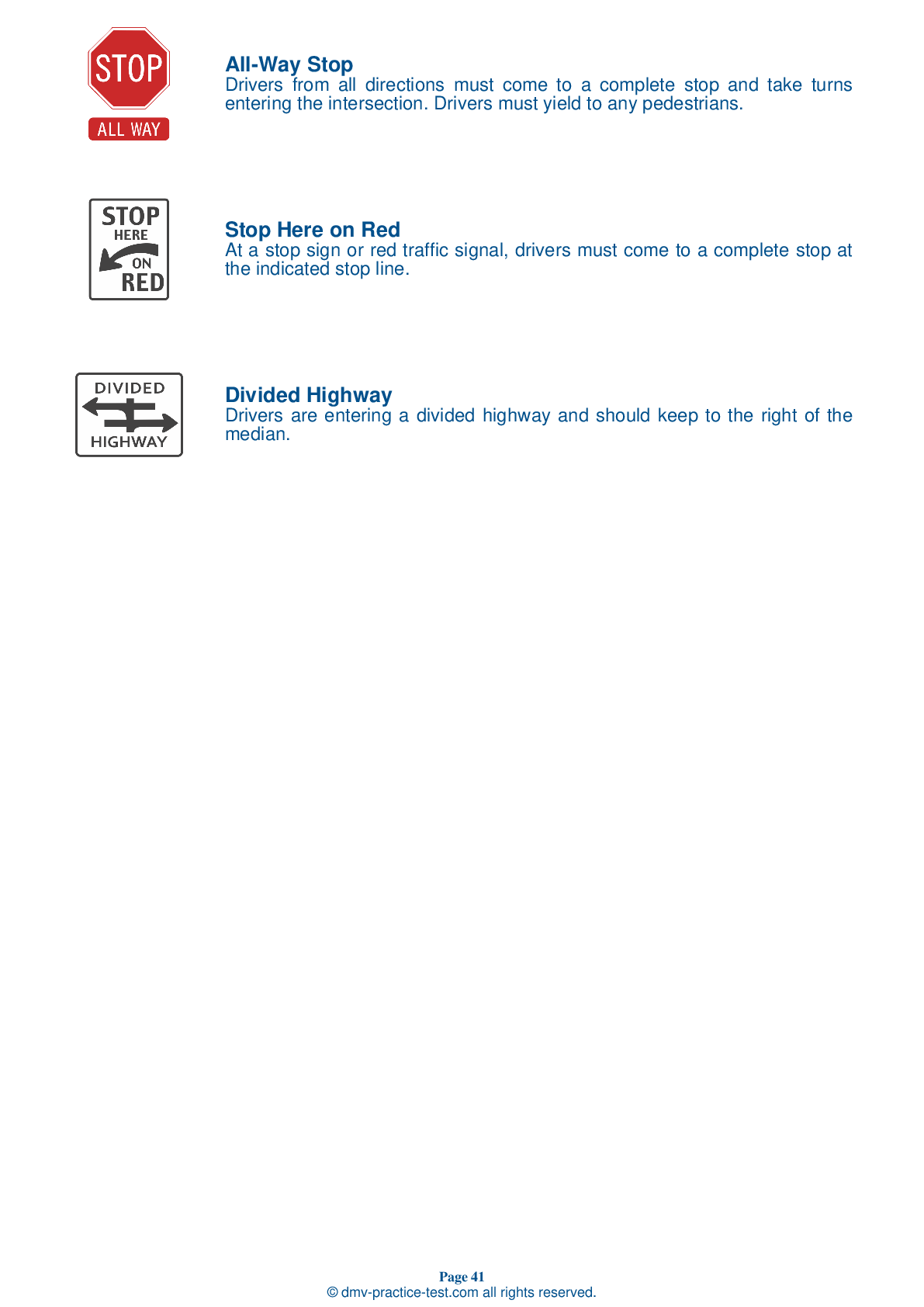FREE Alaska DMV Practice Test #6
This Alaska DMV practise tests has just been updated for January 2025. It contains questions based on the most essential traffic signs and limitations from the Alaska Driver Handbook for 2025. Use actual questions that are very close (often identical!) to the DMV driving permit test and driver's licence exam to prepare for the DMV driving permit test and driver's licence exam.
To help you recall the topics, each practise test question includes a suggestion and explanation. The written component of the official DMV test will include questions about road rules, traffic signs, and driving statutes, as well as information from the Driver Handbook.
To get the required passing mark, you must correctly answer 16 out of 20 questions. Take our DMV practise exam to help you prepare for your Alaska instruction permit or driver's licence.
The DMV exam is available in multiple languages.
Using any form of testing aid will result in an automatic failure, and the DMV may take further action against your driver's licence, so don't do it.
1 . The best way to deal with tailgaters is to:
Check the traffic behind you several times a minute to know if another driver is tailgating, approaching too fast, or trying to pass. If another car is following you too closely, slow down and let it pass. Most rear-end collisions are caused by vehicles following too closely.
2 . When the driver behind you wants to pass, you should:
When the driver behind you wants to pass, you should slow down so that there is enough room in front of your vehicle for the other driver to complete their pass. This will allow them to complete the passing maneuver in less time and more easily.
3 . Emergency vehicles:
You must yield the right-of-way to police cars, fire engines, ambulances, or any other emergency vehicles using a siren or air horn and a red or blue flashing light. Follow any instructions given over the emergency vehicles' loudspeakers. Emergency vehicles often follow each other so you should proceed only when you are certain the way is clear.
4 . This sign means:
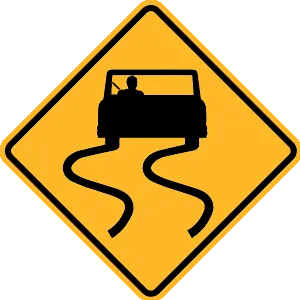
This sign warns that the road is slippery when wet.
5 . An orange sign with black letters means:
Signs in construction areas are usually diamond-shaped and orange with black lettering. Use extra caution when approaching or passing through a work zone.
6 . This road sign means:
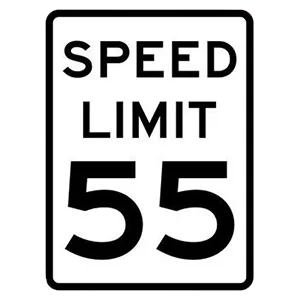
This is a speed limit sign. It indicates the maximum legal speed that you may drive on the road where it is posted. At times of rain, snow, ice, or other less-than-ideal conditions, you may have to drive more slowly than the posted limit.
Need Car Insurance? No problem!
Compare the best rates in Alaska and find a personalized policy that meets your needs.
1. Are You Currently insured ?
2. Married ?
3. Do you own your Home?
4. Do you have more than 1 car ?
5. Your Name
6. Age
7. Zip code
IMPORTANT REMINDER:Auto Insurance is Mandatory to drive in Alaska. Get covered before you hit the road to avoid any fines.
Ranked by best match
